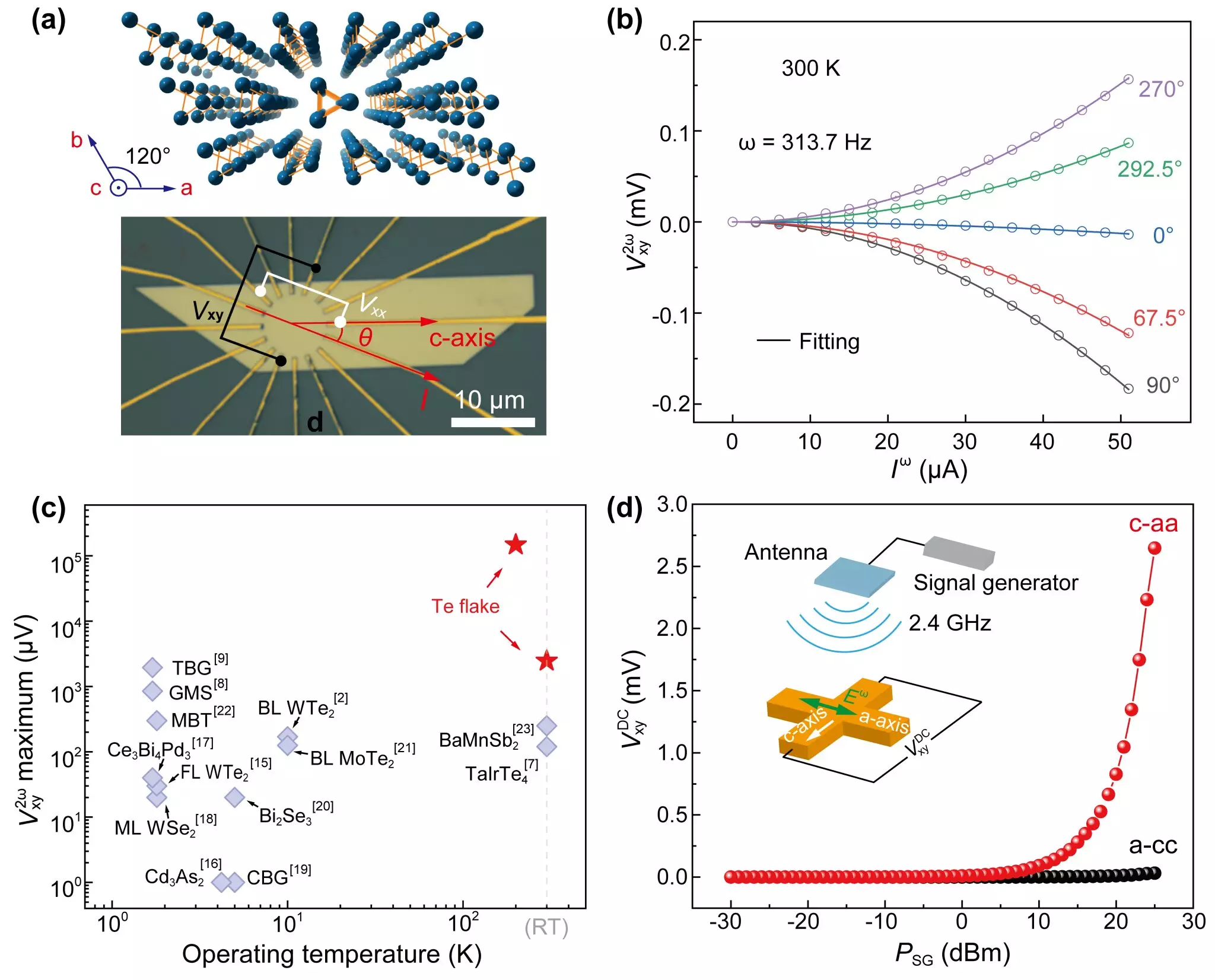Recent advancements in semiconductor research have unveiled the fascinating potential of nonlinear Hall effects, particularly in elemental semiconductor tellurium (Te). This discovery, reported in Nature Communications, marks a significant breakthrough, showcasing the phenomenon at room temperature for the first time. A better understanding of the nonlinear Hall effect (NLHE) can pave the way for innovative applications in electronics, primarily in frequency-doubling and rectifying technologies.
Historically, research into NLHE has encountered several hurdles, notably low hall voltage outputs and a requirement for low-temperature setups which has limited the practical usability of findings. Prior studies had only documented NLHE at room temperature in materials like Dirac semimetal BaMnSb2 and Weyl semimetal TaIrTe4, both of which unfortunately suffered from modest voltage outputs and limited tunability. The research community’s pursuit of more effective and versatile materials led the team at the University of Science and Technology of China (USTC) to explore tellurium’s unique properties.
Tellurium presents a unique opportunity for researchers due to its narrow-bandgap characteristics and one-dimensional helical chain structures, which inherently break inversion symmetry. This structural feature makes Te an ideal candidate for studying NLHE, enabling the generation of substantial second-harmonic signals without the dependence on external magnetic fields. Investigating the nonlinear responses in thin flakes of tellurium has revealed substantial outputs that challenge previously held records.
The recent experimentation resulted in impressive findings, particularly the ability to achieve a second-harmonic output voltage of up to 2.8 mV at 300 K — an order of magnitude improvement over prior instances. Such outputs suggested a greater potential for real-world applications. The research indicates that extrinsic scattering is the principal driver of the NLHE observed in these tellurium thin flakes, highlighting the importance of surface symmetry breaking in the enhanced response.
Building upon their success with NLHE, the scientists ventured into utilizing radiofrequency (RF) signals, successfully demonstrating the wireless rectification capabilities of tellurium. This achievement allowed them to maintain stable voltage outputs across a broad frequency range from 0.3 to 4.5 GHz. Unlike traditional rectifiers that rely on p-n junctions or metal-semiconductor junctions, the Hall rectifier exploits Te’s intrinsic properties, supporting a broadband response under zero bias. This innovation presents new possibilities for energy harvesting and wireless charging applications.
This groundbreaking study into the nonlinear Hall effect in tellurium not only enhances the scientific community’s grasp of nonlinear transport in solid materials but also heralds a new era in advanced electronic device development. With the unique attributes of tellurium paving the way for versatile and efficient devices, the implications of these findings may reverberate through future technological advancements, fostering improvements in energy efficiency and broadened scope for electronic functionality.
The findings by Prof. Zeng Changgan and Associate Researcher Li Lin’s team open up a realm of possibilities within the semiconductor field. As researchers continue to unlock the full potential of materials such as tellurium, they are poised to revolutionize numerous sectors by facilitating the development of innovative electronic devices grounded in the principles of nonlinear Hall effects. This study is a testament to how a deeper understanding of material properties can lead to practical applications that go beyond conventional limitations in technology.


Leave a Reply